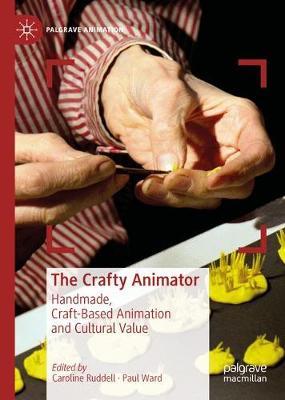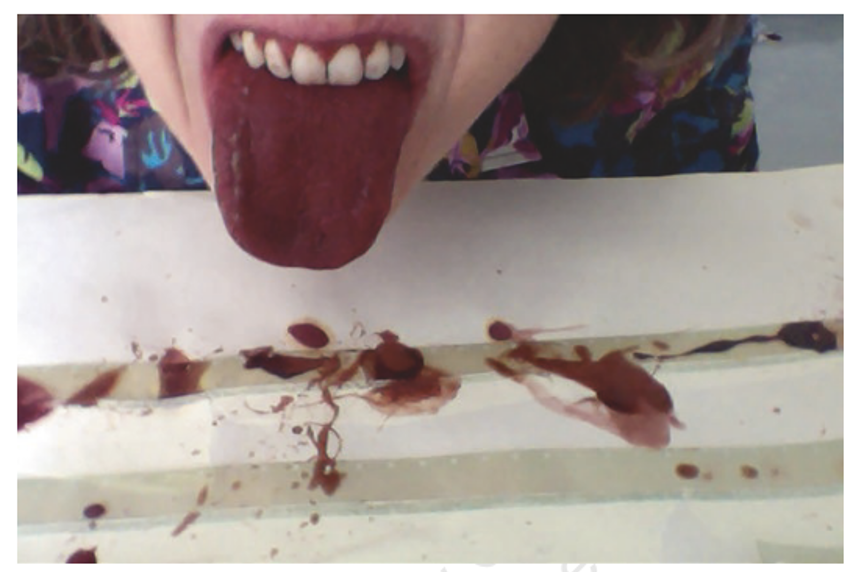Review of Caroline Ruddell and Paul Ward (eds.). The Crafty Animator: Handmade, Craft-Based Animation and Cultural Value. Switzerland: Palgrave Macmillan, 2019.

The Crafty Animator: Handmade, Craft-based Animation and Cultural Value is a coherent collection of essays centered around the production of skilled animators working with different animation techniques. In the book’s nine chapters, the authors offer a wide range of contextual and critical discussions on the scope of how craft has been defined throughout history and how its tumultuous past relates to animation.
After an introduction by editors Caroline Ruddell and Paul Ward, two exceptional chapters by Birgitta Hosea and Lilly Husbands are offered. Hosea’s essay, “Made by Hand,” centers on the origins of the words ‘craft’ and ‘crafty’ and their association with the feminine, witchcraft, and craftivism, as well as tracking the use and terminology and the various ways in which the craft movement has risen. Hosea offers a critical take on Morris, Ruskins, and the current popularity for the terms ‘crafted’ and ‘handmade’.
Husbands follows on from Hosea’s contribution with a more pointed look at the use of the maker’s hand and the physical touch that is present in the work of experimental animators. Husbands’ essay seeks to emphasize the individual labor of the animator and how, through the lens of craft, it can be seen as a mastery of skill and perfection or be subverted through the use of ‘sloppy craft’ for the pursuit of intentional imperfection (see Husbands, 2019: 68).
A very intriguing, albeit infuriating read (due not to the researchers in any way but rather the treatment of an animation icon) is Katharina Boecknhoff and Caroline Ruddell’s chapter on the authorship and cultural response to the work of paper cut animator Lotte Reiniger throughout history. The essay highlights not only the bias and the downplaying of her ability as both a filmmaker and a woman, but also offers further subversions of the artist and craft mentality. It is highlighted problematic language that resonates both in reference to Reiniger and craft-based aesthetics, emphasizing in particular how the word ‘pretty’–along with ‘charming’–is often a shorthand term for adequate, unrefined, or perhaps simply not ‘high art’. This duality of craft as being seen as subservient to ‘Art’ is a recurring theme in many of the chapters. Linking the etymology of the words ‘crafty’ and ‘pretty’ with magic and wizards serves to elevate Reiniger’s work to a whimsical, almost untouchable position while also downplaying her effort as having been simply wished into being with a flick of the wrist (Boecknhoff & Ruddell, 2019).
Carla MacKinnon focuses, instead, on two short films –Daddy’s Little Bit of Dresden China and Model Childhood–which both deal with the difficult subject matter of childhood abuse. The chapter emphasizes how a craft-centered approach to filmmaking serves not only as a gateway to storytelling regardless of practical ability but can also create a tangible link between filmmaker and audience as well as foster a better sense of authenticity when working with personal or sensitive narratives.

Christopher Holiday’s essay uses the pioneering film A Computer Animated Hand (Catmull & Parke, 1972) as a hearty example of the crafted digital aesthetic, cataloging the various issues and discourses around the problematic considerations of computers, the artist’s hand, and digital animation production. With a focus on the labor of the scientists and artists who made the first strides toward a new modern method of animating, the essay draws links between the films’ mix of process and labor with early examples of ‘hand of the artist’ tropes seen in music halls and early ‘lighting sketches’ and ‘chalk talk’ performances (Holliday, 2019: 168-174).
In his chapter, Ewan Kirkland looks at the relationship of the handmade, naive style of productions like Charlie and Lola, South Park or The Lego Movie to childhood play as both a uniformity of experience we have all lived through as children as well as a clever tool for relating to children directly, subverting the adult child knowledge paradigm, or propagating a product aimed at children and adults in a family-friendly sphere. This essay offers thus a bright and deep reading of three very different IPs.
Alexander Seargent’s discussion of the heyday of live-action physical puppetry and the boom of the 1980s blockbuster is not –as he stresses throughout –so much a comment on animation but a parallel industry with similar labor and cultural ties. It can also be seen as an excellent source for discussion of approaches to presenting, commercializing, and promoting films. In particular, the author follows the purposeful industry shift of interest between the performances of the puppeteers and directors of The Jim Henson company, which is his main case study, to the makers and crafters. Although the production of The Dark Crystal is its primary focus, this paper offers some intriguing and useful insight into films of the 1980s and how craft used to be emphasized for potential revenue and cultural acclaim in a period when CGI and new techniques were starting to take hold.
The book is rounded off with an interview conducted by Ruddell and Ward with Eric Dyer, the “modern master of zoetropes”. He is a superb choice of interviewee considered his use of both modern and digital craft-centered approaches to live performance animation that can be interacted with by the audience, as well as the exploration of the concepts behind his intricate zoetropes and the sincerity of his relationship to the real and the joy of creation:
“Material work engages more muscles and more senses—the sound and feel of cutting paper, the smell of paint, the multiplicity of thought and action needed when flying a drone, to name a very few examples. These differences certainly affect flow and creativity. I do feel like a zombie after a day at the computer, yet when I’ve tried to work completely in the material world it’s never gone well—digital processes are an inseparable part of my craft” (Dyer, 2019: 223).
Many of the papers in The Crafty Animator collection are thoroughly grounded in historical context, whilst engaging in conceptual ideas about craft and its reference and symmetry with animation as a medium. Craft’s position as not quite ‘art’ sits in clear view of animation being held as not quite ‘film’. As terms, the two seem to suffer from a long history of othering, complexity, outsiderism, and misunderstanding. Together, however, they bring coherency and legacy of radical expression, skill, and capability. The breadth of what is discussed within this seemingly small volume is considerable and is of real use to anyone to whom craft is an intrinsic part of their study or practice. What is certain is that there is much more to explore and room for further conversation with regards to individual artists and their use of craft-based approaches to filmmaking but also to the wider categorization of ‘craft’ within both digital and traditional approaches to animation and making. The term ‘craft’ within this book has been given the respect it deserves and, although I would say that animation is indeed an art form in itself, ‘craft’ holds within it more understanding of the effort, tenacity, skill, and spirit that brings a film together.
References
Boecknhoff, K., and Ruddell, C. (2019). ‘Lotte Reiniger: The Crafty Animator and Cultural Value’, in Ruddell, C., and Ward, P. (eds.), The Crafty Animator: Handmade, Craft-Based Animation and Cultural Value. Switzerland: Palgrave Macmillan, pp. 75-98.
Dyer, E. (2019). ‘Q&A with Eric Dyer’. Interview by Ruddell, C., and Ward, P. for The Crafty Animator: Handmade, Craft-Based Animation and Cultural Value. Switzerland: Palgrave Macmillan, pp. 203-226.
Holliday, C. (2019). ‘In Good Hands? Indexes and Interfaces in A Computer Animated Hand (Ed Catmull & Frederic Parke, 1972)’, in Ruddell, C., and Ward, P. (eds.), The Crafty Animator: Handmade, Craft-Based Animation and Cultural Value. Switzerland: Palgrave Macmillan, pp. 157-180.
Husbands, L. (2019). ‘Craft as Critique in Experimental Animation’, in Ruddell, C., and Ward, P. (eds.), The Crafty Animator: Handmade, Craft-Based Animation and Cultural Value. Switzerland: Palgrave Macmillan, pp. 45-74.
Laura-Beth Cowley is a Ph.D. student based in Bristol at The University of West England. The focus of her work is on new technology and its use within stop-motion animation. She is a filmmaker and journalist, writing for multiple magazines and journals. She is currently Features Writer for Skwigly Online Animation Magazine, the UK’s largest online resource for animation news.

3D, Vfx animation services